Metallic profile
Also referred to as tile set-up corner. It closes the gap between the wall and the worktop without the use of sealant. Look great in combination with a gray countertop, stainless steel sink or chrome mixer tap.
To mount the profile, you must first install the kitchen, then fix the corner. Only then should you start apron facing with ceramic tiles.
In addition to metal profiles, plastic corners are produced: they are more flexible, which makes it possible to mask the unevenness of the wall. But such products look cheap, so if you ordered an expensive kitchen, we recommend not to spoil its appearance with a budget solution.
Stone skirting board
If you are making a countertop from natural or artificial stone, immediately order a plinth, which will become a barrier between the wall and the work surface. This method will allow you to design the joint as aesthetically as possible, and you will not have to look for a plinth in countertop color.
This option cannot be called a budget option: the wall should be perfectly aligned, the headset should stand close to it, and the assembly seam should be made as carefully as possible.
Which skirting board looks better - thin or high - is up to you. The most elegant solution is considered to be a half-wall apron: it reliably protects its lower part from water and dirt. From above, the surface is decorated with tiles, washable paint or decorative plaster.
Ceramic border
An interesting solution for those who are not afraid to combine styles and a variety of materials. A slightly protruding border from the same collection as the backsplash tile will block moisture and beautifully decorate the joint with the countertop.
In order for the side to adhere to the elements as much as possible, it is necessary to use a silicone sealant - transparent or in the color of the material.
The border will decorate country style kitchen and Provence, will be appropriate in eclecticism and even in a classic interior.
Wooden corner
The implementation of this idea entails some difficulties: in order for the corner to look attractive and not give the impression of a foreign object, it is important to choose a product to match the countertop. Therefore, if your choice fell on a work surface made of wood, add a corner to it at the time of ordering the kitchen.
Today, the most relevant profiles are in the form of a bar, that is, rectangular: they can be high or low. Also on sale there are corners with a triangular section, reminiscent of budget plastic profiles. Experts advise choosing a product with the most laconic design, since it is easier to care for it.
To fix the wooden corner, you need special glue. The composition must be applied to both ends and pressed firmly against two surfaces.
Sealant or grout
This option looks as simple and expensive as possible, does not attract attention, but requires painstaking work.The tile is laid out on a perfectly flat wall after the installation of the kitchen unit and the countertop, which is closely adjacent to the apron. With this solution, the tiles must be selected before ordering the kitchen, and the builders will "adjust" the elements to the height of the apron.
The thickness of the tile and tile adhesive will be approximately 1 cm, so there will be no seam.
The junction is coated with sealant or epoxy grout. The second method is much more reliable: the composition does not absorb water, so the seam will not change its color and prevent mold.
Choose the one that suits you best for a practical and visually appealing kitchen.

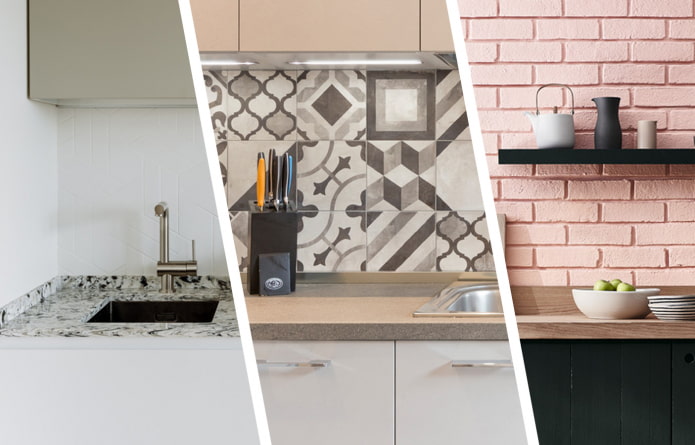
 10 practical tips for arranging a small kitchen in the country
10 practical tips for arranging a small kitchen in the country
 12 simple ideas for a small garden that will make it visually spacious
12 simple ideas for a small garden that will make it visually spacious

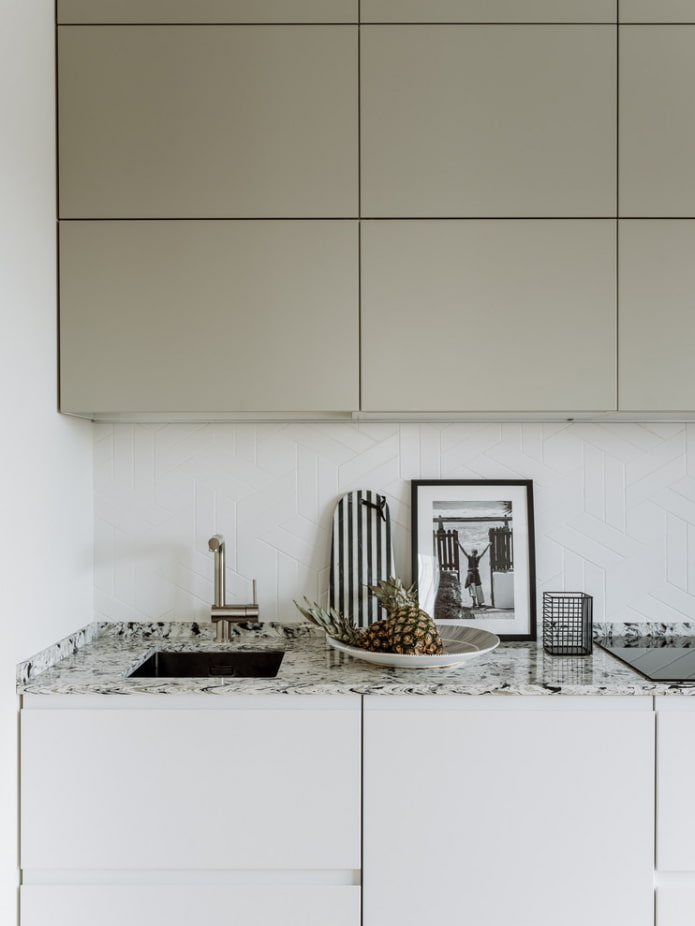
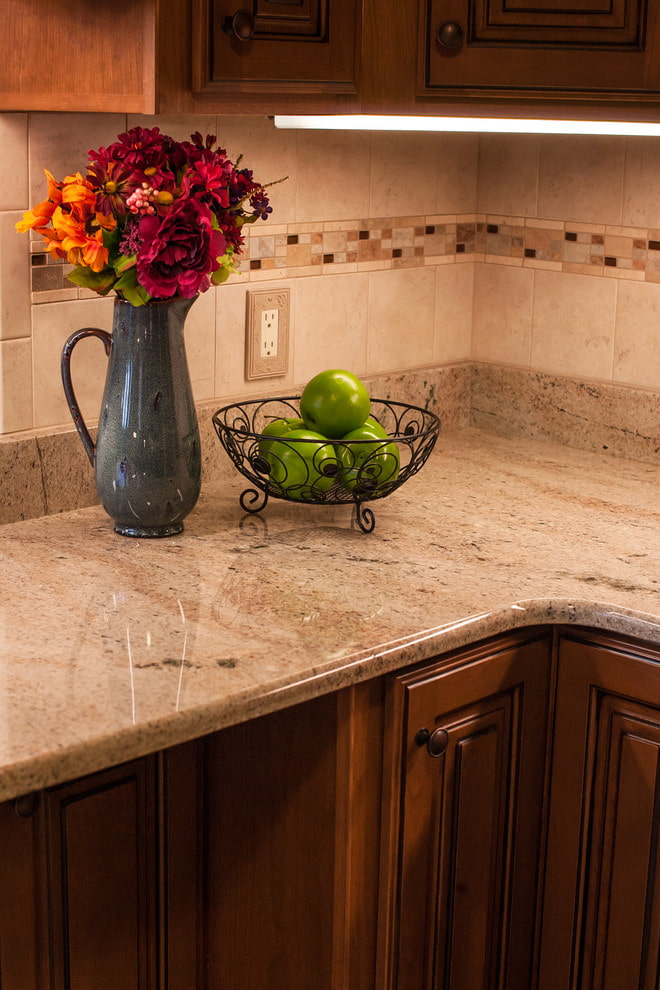
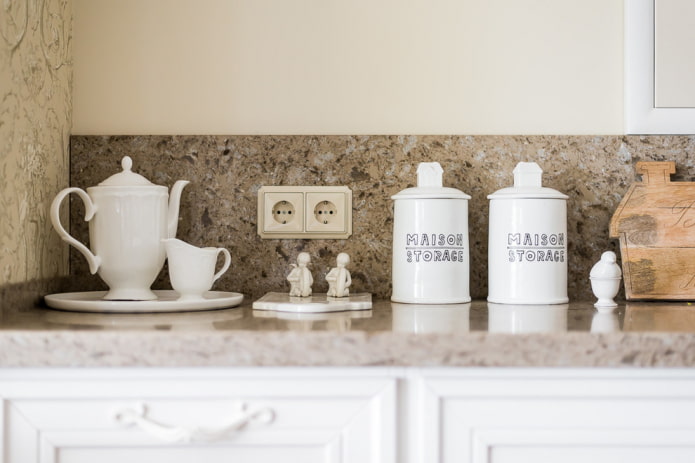
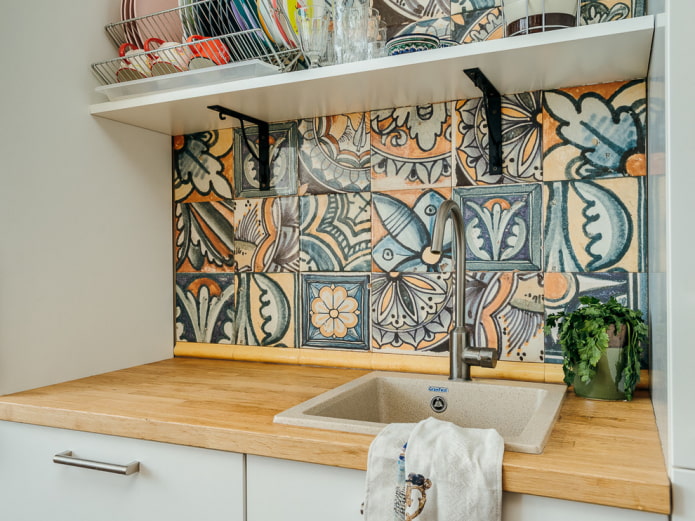
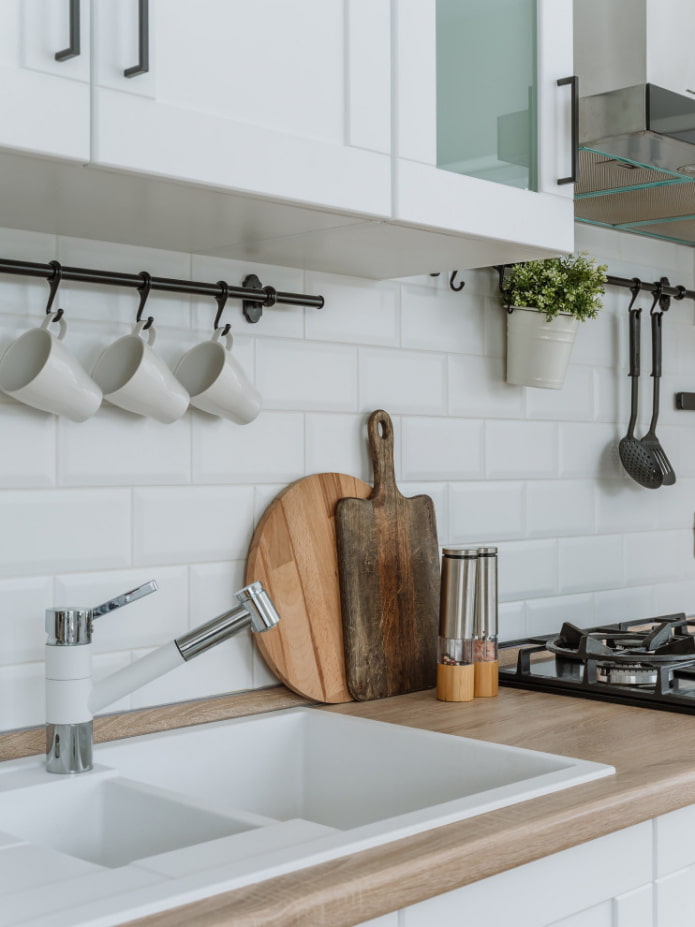
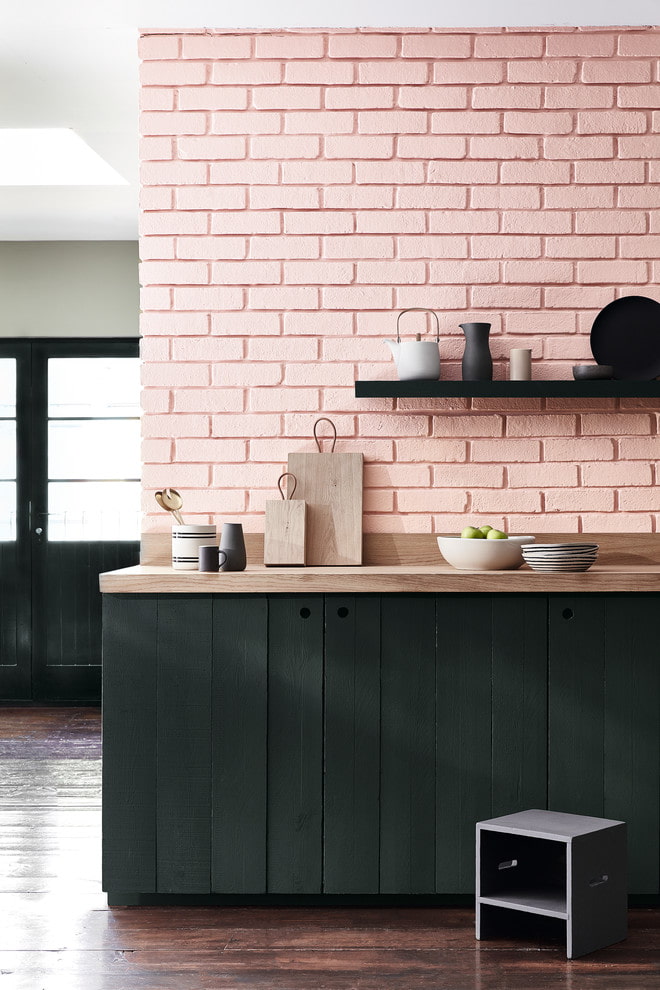

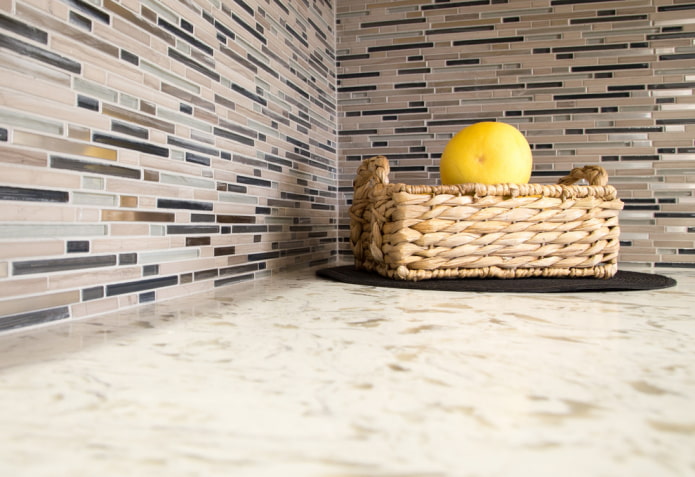
 How to choose the color of your kitchen sink?
How to choose the color of your kitchen sink? White kitchen set: features of choice, combination, 70 photos in the interior
White kitchen set: features of choice, combination, 70 photos in the interior Black set in the interior in the kitchen: design, choice of wallpaper, 90 photos
Black set in the interior in the kitchen: design, choice of wallpaper, 90 photos How to choose curtains for the kitchen and not regret it? - we understand all the nuances
How to choose curtains for the kitchen and not regret it? - we understand all the nuances Design of a white kitchen with a black countertop: 80 best ideas, photos in the interior
Design of a white kitchen with a black countertop: 80 best ideas, photos in the interior Kitchen design with green wallpaper: 55 modern photos in the interior
Kitchen design with green wallpaper: 55 modern photos in the interior